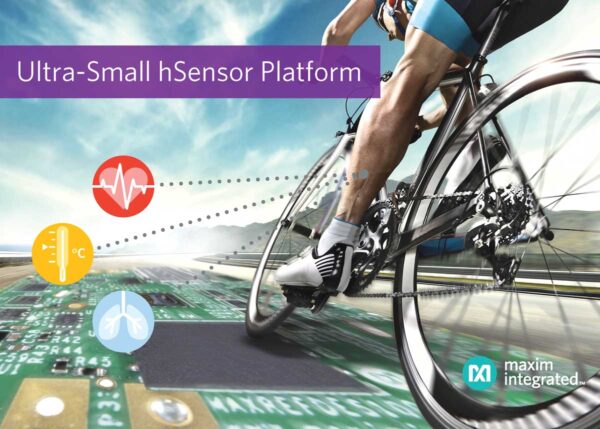 Designers of health, wellness, and high-end fitness applications can quickly and easily validate next-generation solutions with the ultra-small hSensor Platform from Maxim Integrated Products, Inc.
Designers of health, wellness, and high-end fitness applications can quickly and easily validate next-generation solutions with the ultra-small hSensor Platform from Maxim Integrated Products, Inc.
Creating a custom board with sensors can be complex, as designers must first build custom hardware and firmware to validate their concepts and then build prototypes before starting any field trials. From there, they generally spend a significant amount of time evaluating sensors and existing solutions. Maxim’s hSensor Platform eliminates the extra 3-6 months it typically takes to develop a prototype by bringing all the hardware building blocks together on one PCB, as well as having readily-accessible hardware functionality with the ARM mbed hardware development kit (HDK).
The hSensor Platform, offered as the MAXREFDES100# reference design, includes an hSensor board, complete firmware with drivers, a debugger board, and a graphical user interface (GUI). With access to firmware source code on Maxim’s website, the platform allows designers to load algorithms for different use cases and adapt to their specific applications. Customers can download the firmware to optimize designs, enable faster evaluations, and significantly reduce time to market. The hSensor Platform is the only complete development platform available today and is ideal for health, wellness, and high-end fitness applications such as chest straps, ECG patches, wrist-worn devices, thermometers, disposable temperature patches, blood oxygen measurement, smart weigh scales, and bio authentication. For example, one can design a wearable patch to continuously record ECG on a single CR2032 battery for twice as long compared to today’s existing solutions—a power savings of more than 50%.
The hSensor Platform includes the following products:
• MAX30003: Ultra-low power, single-channel integrated biopotential AFE
• MAX30101: High-sensitivity pulse oximeter and heart-rate sensor
• MAX30205: Industry’s only clinical grade temperature sensor
• MAX32620: Ultra-low power ARM® Cortex®-M4F microcontroller optimized for wearables
• MAX14720: Industry’s lowest quiescent current power management integrated circuit (PMIC)
• Additional content: Inertial sensors (3-axis accelerometer, 6-axis accelerometer/gyroscope), barometric pressure sensor, flash memory, and BLE radio
Key Advantages
• Quickly validate your concept: Fully working hardware and firmware cuts design time by up to six months
• Fast time to market: Build on top of existing hardware and firmware to quickly wrap up your hardware design
• ARM mbed support: For efficient evaluation and rapid application prototyping, the mbed environment provides a high level of abstraction to eliminate maintenance of software tools and provide an extensive library of open source software
• Complete solution: Compact, ultra-small solution (25.4mm x 30.5mm) provides all you need in one place without having to access multiple sources; runs on coin cell; allows data to be monitored over Bluetooth low energy, stored in flash, or streamed via USB
Maxim Integrated
www.maximintegrated.com


